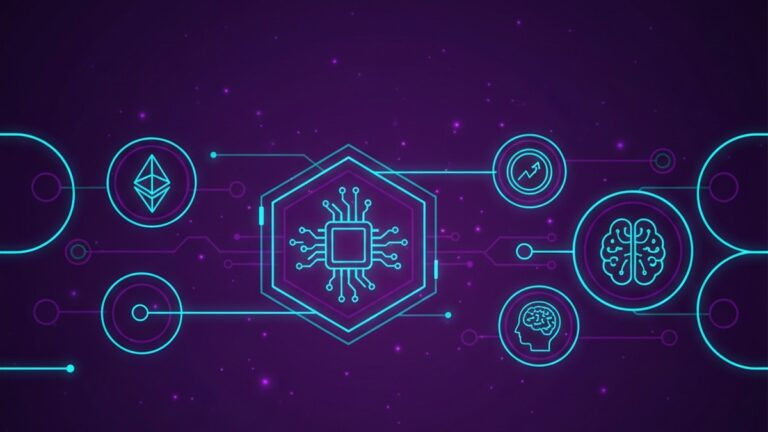In a significant stride towards bridging the gap between traditional finance and the burgeoning world of artificial intelligence, Google has unveiled its new AI Agent Payments Protocol. Backed by major players like Coinbase and the Ethereum Foundation, this initiative aims to create a seamless payment ecosystem for AI agents, revolutionizing how these digital entities interact financially.
Bridging Two Worlds: Traditional Finance Meets Crypto
The AI Agent Payments Protocol is not just another tech innovation; it’s a bold attempt to create a “common language” for AI financial transactions. By bringing together traditional payment giants and leading cryptocurrency organizations, Google hopes to foster an environment where AI agents can operate with greater financial autonomy and efficiency.
This protocol intends to streamline payments for AI applications that often struggle with the complexities of existing financial systems. For example, an AI-driven marketplace can now facilitate transactions between agents without the cumbersome need for human intervention. Imagine an AI tasked with buying raw materials and negotiating prices, all while handling its finances in a reliable, standardized manner. This could become a reality sooner than we think.
The Role of Major Backers
The involvement of Coinbase and the Ethereum Foundation is particularly noteworthy. These organizations are pillars of the cryptocurrency landscape, and their support lends significant credibility to the protocol. Coinbase, known for its user-friendly cryptocurrency exchange platform, brings a wealth of experience in secure and efficient digital transactions. Meanwhile, the Ethereum Foundation’s expertise in smart contracts provides a robust framework for self-executing transactions, a crucial component of the protocol.
This collaboration highlights a growing recognition of the potential synergies between AI and blockchain technologies. By integrating these two fields, the protocol promises to enhance transparency, security, and speed—attributes that are often lacking in traditional payment systems.
A Universal Language for Payments
One of the protocol’s primary goals is to establish a universal standard for AI payments. Currently, the diversity of payment methods and regulations across different regions poses a significant challenge for AI applications operating on a global scale. By creating a common language, the protocol aims to eliminate these barriers, allowing AI agents to transact seamlessly across borders.
Consider the potential for cross-border transactions. An AI agent in Japan could purchase goods from a vendor in Germany without the usual delays and fees associated with currency exchange and international payments. This could significantly boost the efficiency of global supply chains, particularly in industries where speed and precision are paramount.
Challenges and Criticisms
Despite its ambitious vision, the AI Agent Payments Protocol is not without its critics. Skeptics argue that the integration of AI and blockchain technologies could lead to increased complexity and higher costs. Additionally, concerns around data privacy and security remain prevalent. The protocol’s reliance on blockchain could exacerbate these issues, as the technology’s transparency is often at odds with the need for confidentiality in financial transactions.
Moreover, there are questions about the regulatory landscape. As governments worldwide grapple with the rise of cryptocurrencies, the adoption of such a protocol could face legislative hurdles. Ensuring compliance with diverse regulatory frameworks will be crucial for its success.
The Road Ahead
The unveiling of the AI Agent Payments Protocol marks an exciting chapter in the convergence of AI and financial technology. While challenges remain, the potential benefits of a standardized payment system for AI agents are too significant to ignore. It’s not just about improving efficiency; it’s about redefining the way digital entities interact with the world.
As Google, Coinbase, and the Ethereum Foundation continue to refine this protocol, the broader implications for both AI and finance will undoubtedly unfold. The success of this initiative could pave the way for more collaborative efforts between tech giants and the crypto community, setting the stage for a future where AI agents are not just tools but active participants in the global economy.
In the coming months, all eyes will be on the protocol’s development and implementation. For now, it’s clear that Google and its partners are committed to pushing the boundaries of what’s possible, fostering an ecosystem where AI and blockchain technologies can thrive together. As this ambitious project progresses, it will be fascinating to see how it shapes the landscape of digital payments and beyond.

Steve Gregory is a lawyer in the United States who specializes in licensing for cryptocurrency companies and products. Steve began his career as an attorney in 2015 but made the switch to working in cryptocurrency full time shortly after joining the original team at Gemini Trust Company, an early cryptocurrency exchange based in New York City. Steve then joined CEX.io and was able to launch their regulated US-based cryptocurrency. Steve then went on to become the CEO at currency.com when he ran for four years and was able to lead currency.com to being fully acquired in 2025.


